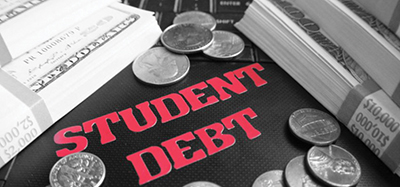

By Charlene Crowell
Days before student borrowers across the nation resume student loan payments after a more than two-year pause prompted by the COVID-19 pandemic, a diverse group of 20 cities and counties representing more than 1.2 million people with nearly $50 billion in student loan debt sent a letter on September 21 to President Biden. Although the letter began by applauding his leadership in pursuing debt relief, it also urged even more persistent and aggressive actions.
“We must not accept a return to the failed pre-COVID status quo where nine million borrowers were in default – one borrower defaulting on their student loans every 26 seconds,” wrote the local officials that included Boston, Cleveland, Little Rock, Newark, Philadelphia, San Francisco, and other locales. “Black and Latino/a borrowers have faced the greatest debt burdens and worst repayment outcomes, expanding and perpetuating racial inequality across American cities.”
The nation’s 44 million and rising student loan borrowers collectively owe an unsustainable $1.7 trillion. And this October – regardless of what the White House may yet launch, payments will become due again.
Fortunately, online resources developed by the federal government can assist borrowers to adjust to the return of payments. Moreover, many of these tools make clear borrower responsibilities, consequences for failure to make timely payments, and where needed information can be found.
For example, Federal Student Aid’s website offers useful and easy to understand tips on how borrowers should begin repayments. Here’s a summary of its content:
- Update your contact info. – Review your Student Aid.gov profile as well as your loan servicer’s website. Failure to complete both can result failing to receive updates on your loan.
- Get info about your next payment. – After updating your contact info, your loan servicer alerts borrowers to three important items – payment due dates, upcoming interest, and payment amounts. Your payment will be due no sooner than 21 days after your servicer sends the billing statement. Borrowers may also call or email their loan services for this information. If loan servicer contact info is not known, borrowers are urged to find out that important information by phoning 1-800-4-FED-AID (1-800-433-3243).
- Find out if you’re enrolled in the best repayment plan for you. – Borrowers have options on selecting the best repayment plan for their circumstances. Federal Aid’s online Loan Simulator tool helps borrowers to better understand their repayment options on federal loans. Browsers using this tool are advised that its availability does not guarantee full accuracy. But for borrowers who need clarification on determining their best strategy for loan repayment, whether to consolidate their loans, or are struggling with current loan repayments, it provides useful information and direction. The Loan Simulator also offers an option to learn more about student loan limits, how your choice of school affects borrowing levels, and more. Access the Federal Student’s Loan Simulator at: https://studentaid.gov/loan-simulator/
- Take action now if you need to lower your monthly payment. – Borrowers previously enrolled in an income-driven repayment plan or IDR but have had a change of income since payments were suspended, may be able to receive a new and lower monthly payment. Specific steps are required for borrowers in this category. For instance, beyond certifying your employment and income, family and marital status must also be documented in an updated application.
- If you need immediate relief, contact your loan servicer ASAP. – Your loan servicer is your point of contact for your loan, loan payments, and other needs.
- Fully understand the difference between loan delinquency and loan default. If you miss a payment, your loan is delinquent. If it remains delinquent for 270 days, it is defaulted and brings specific financial penalties:
a. The default status will damage your credit score.
b. You could lose your access to more student aid.
c. The government can seize your tax refund, up to 15 percent of Social Security benefits, and/or your paycheck towards paying off your defaulted loan.
Beyond these resources, the Consumer Financial Protection Bureau (CFPB) recently encouraged consumers to remember filing complaints on loan servicer issues remains an option.
“As borrowers prepare for student loan payments to resume, CFPB is working to ensure that servicers follow the law and that consumers are protected,” states a September web advisory. “We will be looking closely at loan servicers’ practices, borrower outcomes, information from fellow regulators, and issues raised through consumer complaints…CFPB has a number of tools for holding student loan servicers accountable, but consumer complaints are particularly powerful because they allow us to help consumers, identify and address emerging issues, and hold companies accountable for following the law.”
Anyone desiring to register a complaint with CFPB should visit: https://www.consumerfinance.gov/complaint/. Complaints may also be made by phone on weekdays between the hours of 8am and 8pm Eastern Time. Callers should expect to spend an average of 30 minutes for completion. The toll-free phone line is (855) 411-3732.





Be the first to comment